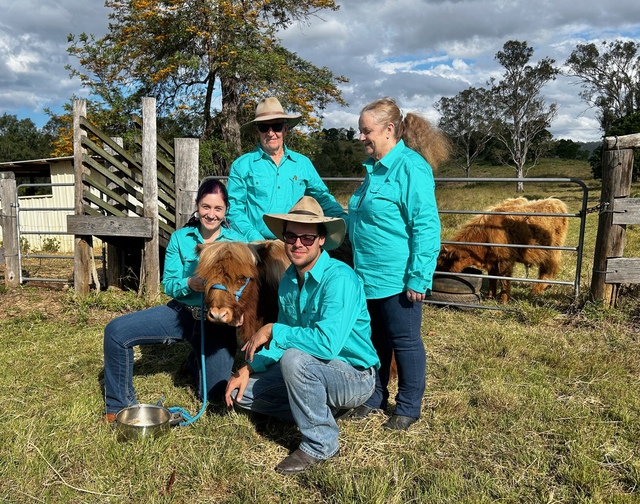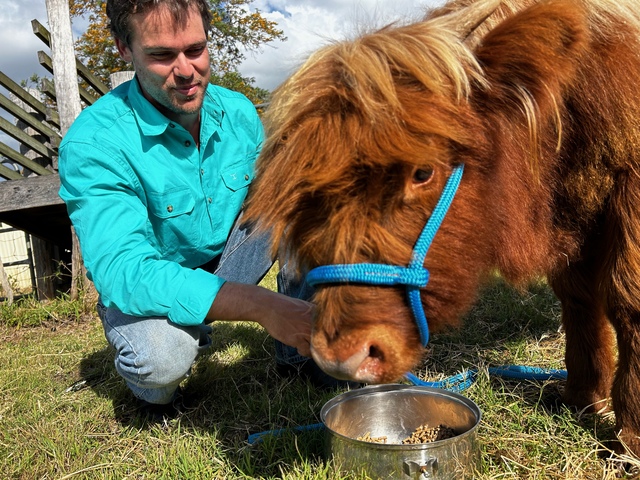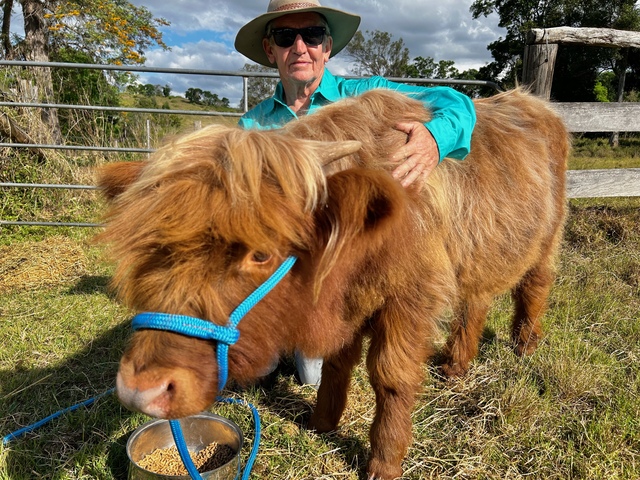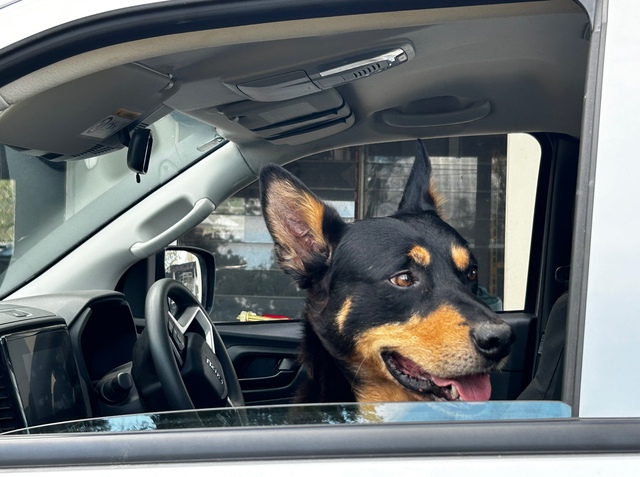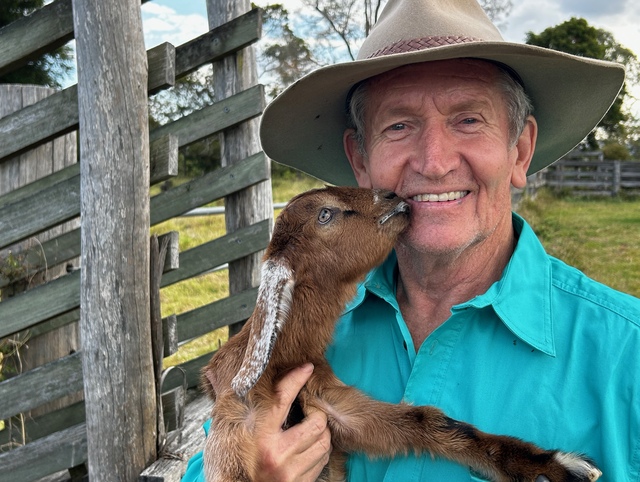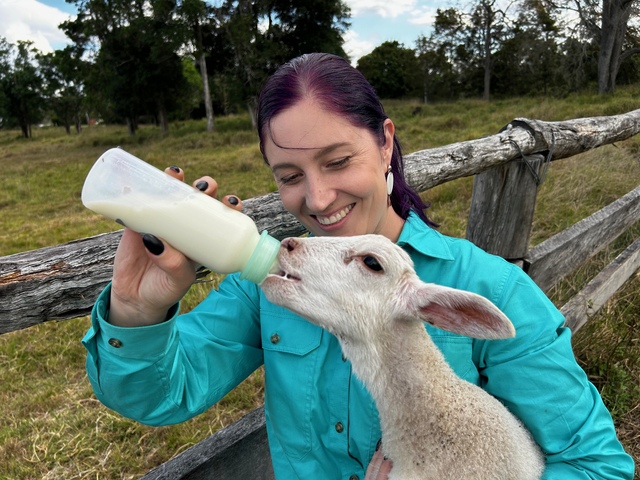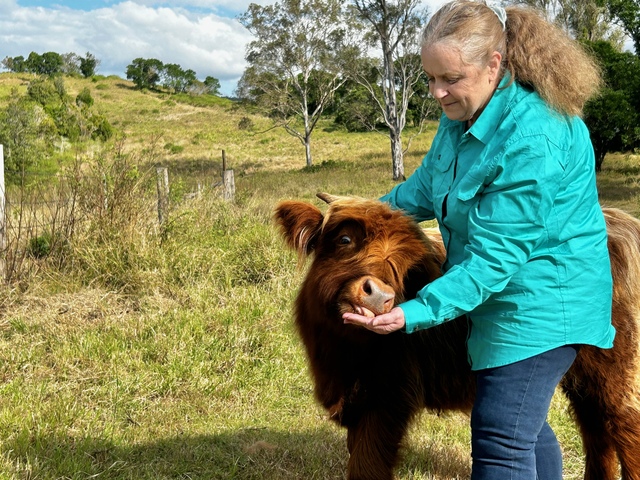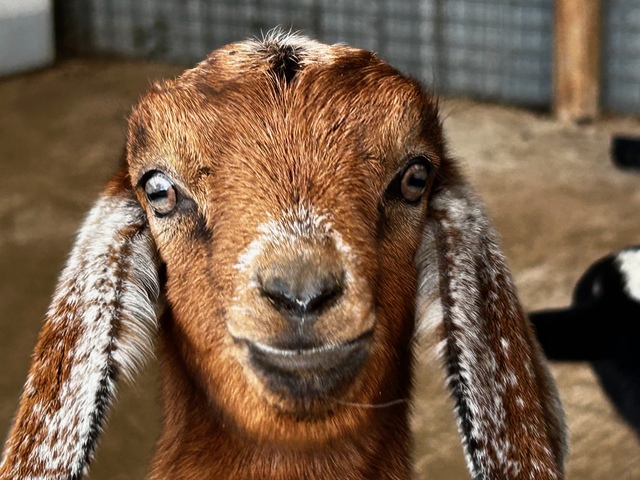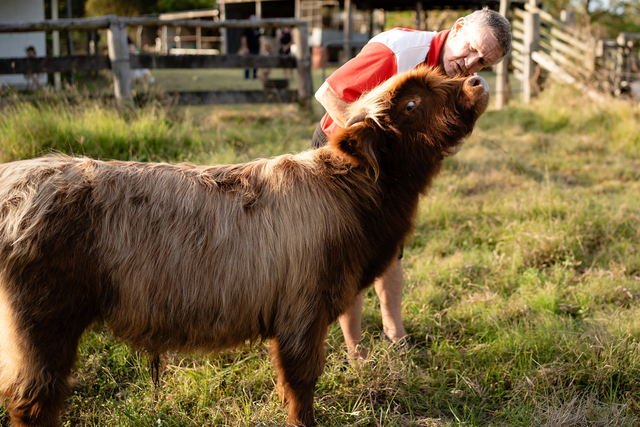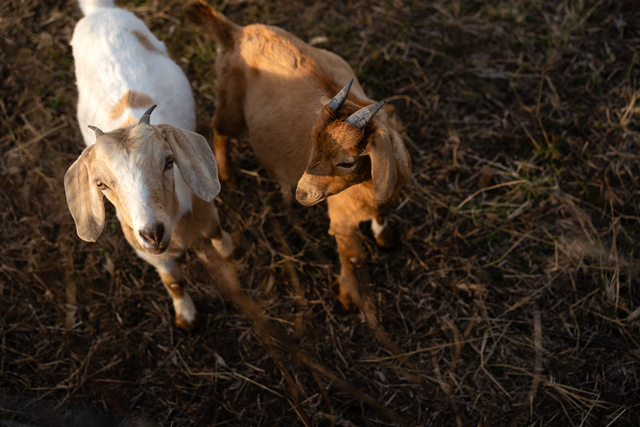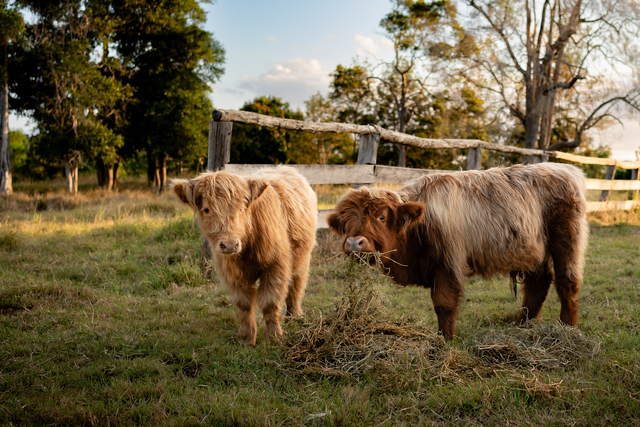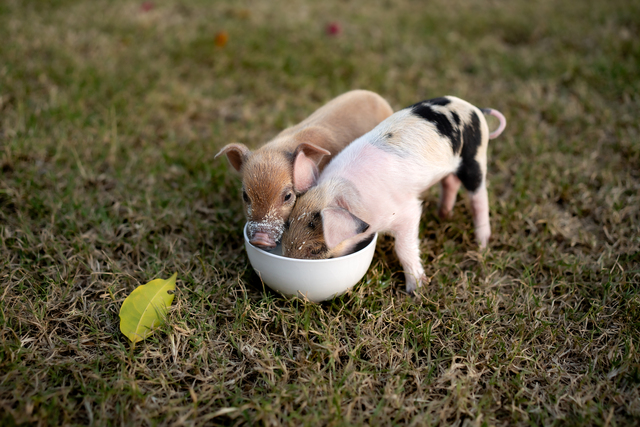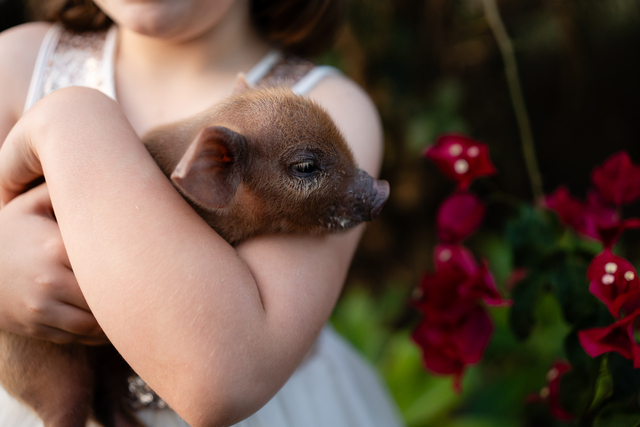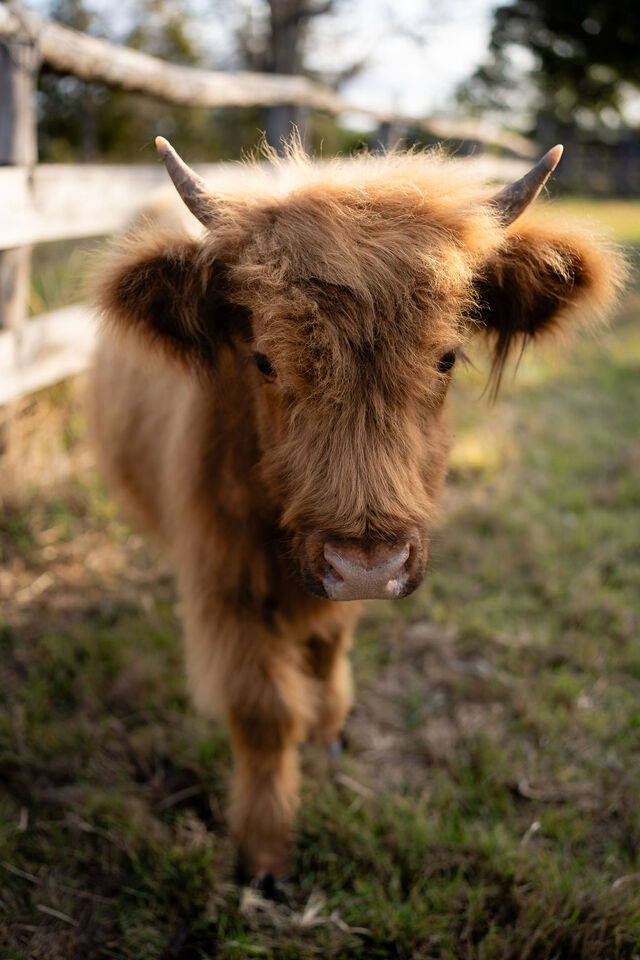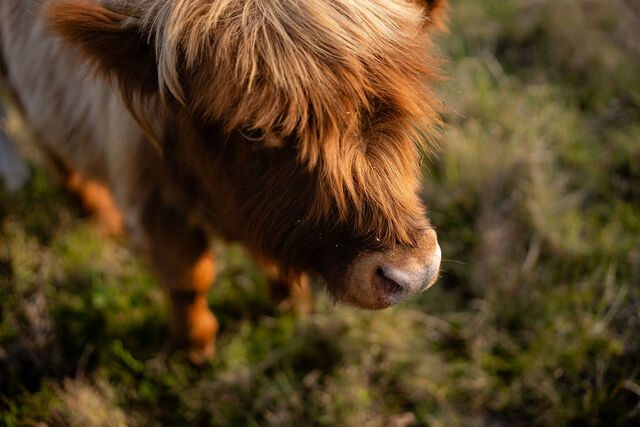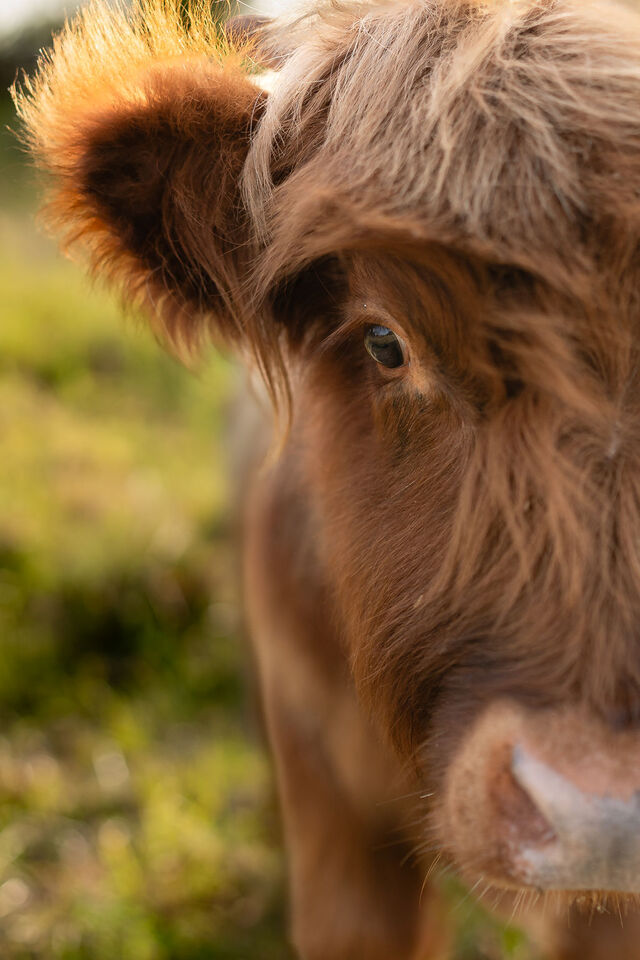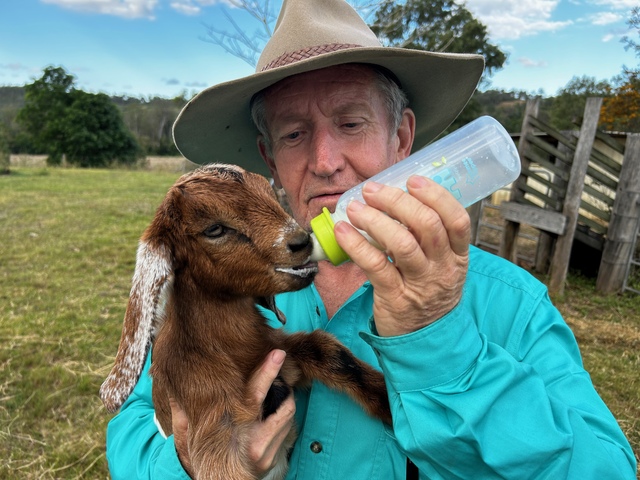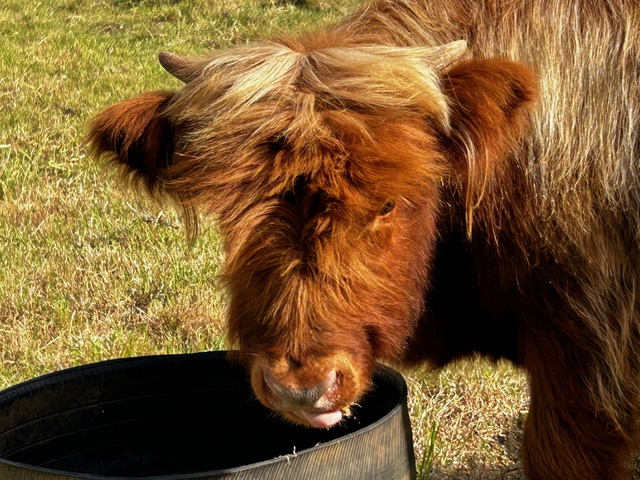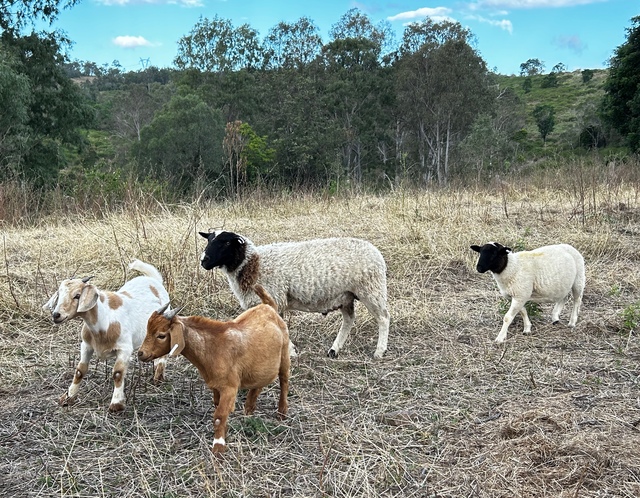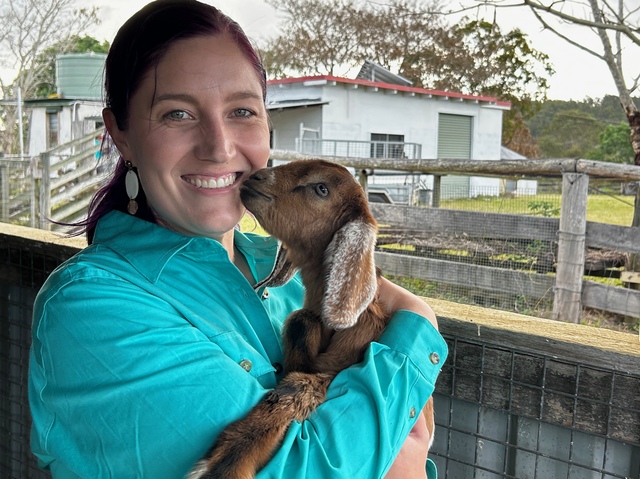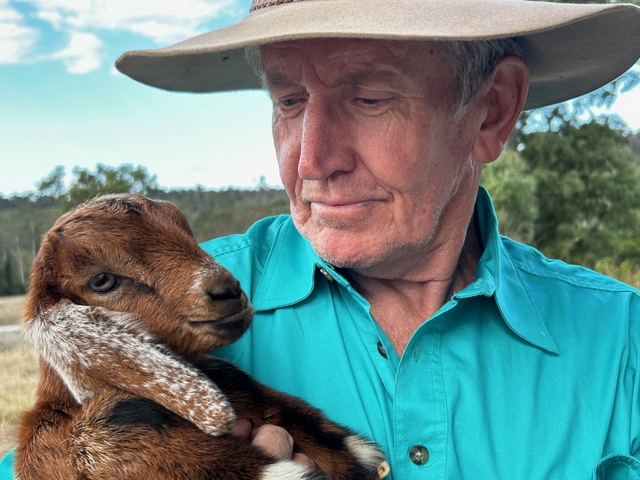
Highland Cows have been recorded as a breed dating back to Scotland in 1885 but their qualities and endearing appearance have seen them spread throughout the world. ERLE LEVEY got up close with some of these lovable young cattle at a farm tour in Lower Wonga.
“These gentle giants, known for their long, flowing locks and docile nature, are not just beautiful to look at; they are also integral to regenerative farming.”
Once you see them you know instantly that you will never forget them.
Long horns and a thick, shaggy coat. And I’m not talking about The Gruffalo.
They are recognised as being the first registered breed of cattle, dating back to 1884.
Highland Cows or “heilan coos” aren’t just dominating many a Scottish field, they have spread throughout the world due to the way they can adapt to every environment, the high butterfat content of their milk and the quality of their meat.
You definitely must have seen a Highland Cow or two by now … even if it has been postcards.
Inherently Scottish, they are hardy, forceful, bonnie, and are often, although not always, ginger.
There’s nae shortage of a Heilan Coo up in the Highlands.
Despite some challenges, the Highland cattle breed does well and plays an important role in cattle breeding across Australia.
This is why I’m with Trevor and Julie Rimmington, their daughter, Ashleigh, and her fiancé, Matthew Andrews at Lower Wonga.
Ashleigh and Matthew have partnered with Trevor and Julie to run the 190-acre property with Widgee Creek around the boundary and adjoining Brooyar State Forestry.
This is the setting for them to run Highland Hideaway Experiences Farm Tour, designed as a semi-private experience to discover the delights of farm animals and the outdoors lifestyle.
They want visitors to have an intimate experience in which a maximum of eight participants will, over the course of two hours, dive into hands-on activities, connect with some adorable farm animals, and enjoy a delightful morning in nature.
It will be a chance to meet the beloved Highland Cows – Cupcake, Apollo, and Jock. Then enjoy feeding them while learning about their unique personalities and importance on the farm.
The tours include getting up close with the inquisitive goats and sheep.
There will be the chance to bottle-feed baby goats, sheep, and even feed baby piglets.
The adventure starts by sourcing farm-fresh produce and crafting a morning treat, that will later be cooked over a campfire.
As well as novelty games for all ages, there will be educational fun facts about farming and farm animals.
Born at Nambour and having worked throughout Queensland as a plasterer, Trevor was ready for retirement.
In 2023, his life took an unexpected turn. An innocent looking lump on his neck turned out to be a very rare cancer, sending Trevor and Julie spiralling into a whirlwind of emotions.
“Faced with the fragility of life, I began to reassess my priorities. The urgency to live fully, to embrace the present, and cultivate a life rich in experiences, became paramount.
“It was during this tumultuous period that the vision for Highland Hideaway Experiences began to take root.
“I had long held a passion for healthy, toxin-free living and regenerative farming practices, but the scare intensified my desire to create a sanctuary, both for myself and others.
“I was on the lookout for the perfect place to set my plans into action.’’
When Trevor and Julie stumbled upon the property in Lower Wonga, it felt like fate. The sprawling landscape, with its rolling hills, creek flats and lush pastures, called to him.
Widgee Creek meanders for 1.5km around the boundary while Brooyar State Forestry adjoins on two boundaries.
“It was the perfect canvas for my dream,’’ Trevor said, “a place where nature could thrive, and where I could put into practice the benefits of sustainable living.
“My cancer scare awakened me to my own mortality, so I was forced to look to the future and make plans accordingly.
“Our daughter, Ashleigh, and her fiancé, Matthew, were keen to partner with us in purchasing the farm and running the day-to-day operations.
“I could see great potential in the farm despite the fact that it was somewhat overgrown at the time. The property had been farmed conventionally for many years.
“With many months of cancer treatment, multiple surgeries, radiation therapy, and immunotherapy, I had plenty of time to research the most effective ways to bring the farm back to a healthy, productive ecosystem.
“Regenerative farming seemed to be the best solution and minimises the use of chemicals.
“One of my first decisions was to introduce a mix of standard beef cattle and Highland Cattle to the farm.
“These gentle giants, known for their long, flowing locks and docile nature, are not just beautiful to look at; they are also integral to regenerative farming.
“After always having an interest in Highland Cattle, we could finally have our own.
“Their unique grazing habits promote biodiversity, allowing the land to flourish naturally.
“Highland Cattle are hardy, resilient animals that thrive in various conditions, all while minimising our environmental footprint. It was the perfect marriage of beauty and sustainability.’’
Trevor and Julie lived at Nambour before moving to Gympie and have always had an affection for animals.
Julie was born in Chinchilla and became a registered nurse. They had bred dogs for years – champion samoyeds, then rottweilers, and German shepherds.
Then Ashleigh brought home a dachshund, so they have them as well as Australian miniature long-hair terriers.
As a family they have been involved with Australian Native Animal Rescue, taking in and raising little animals that have been orphaned.
Ashleigh worked at Bent Street Veterinary Clinic for a few years and is now operations and marketing manager at Mary Valley Rattler.
“We would deal with the tiny ones,’’ Julie said, “hand feed them until they were ready to soft release them. “The gate would be left open so they could go out and then come back – gradually they would get confidence and just return to the wild.’’
Highland Cows originated as a breed in the Scottish Highlands, and have distinctive long horns and a long shaggy coat.
It is a hardy breed and while a group of cattle is generally called a herd, a group of Highland Cattle is known as a “fold.“
This is because in winter, the cattle were kept in open shelters made of stone called folds to protect them from the weather at night.
Initially taken up by farmers in England, Highland Cows were exported to countries of the world, among them Argentina, Australia, Canada and the United States.
In the 20th century there were exports to various European countries, with the largest numbers in France and Finland.
Highland cattle were first imported into Australia by the mid-19th century, arriving in Port Albert, Victoria, in 1841.
In 1988 the Australian Highland Cattle Society was formed. Since then, numbers have been growing and New Zealand has been looking to establish the breed there.
Australian farmers choose them because the cattle can adapt to every environment.
For Trevor, the move into Highland Cattle was a matter of timing. Not long after buying the Lower Wonga property he needed to have the hip operation .
“There’s a lot of work to do here. The property had been vacant.
“We have Droughtmaster cattle as well.
“We had a property at Pie Creek, and I have always liked them … they are easy to handle.
“The idea of Highland Cattle came from Ashleigh.’’
After spending most of her high school years at Pie Creek, Ashleigh said the distinctive cattle would suit the family’s long-term plans.
“When Dad started researching Highland Cattle we realised that they do fit in with what we want.
“They’ve got history. They’ve got milk. They’ve got butter. They’ve got good meat and are lovable.
“They eat a lot more than other breeds do so they bring the property back to what it should be.’’
Trevor said they were planning to do cell grazing to improve the soil and the productivity.
“Regenerative farming is a matter of determining what fits in with our region and our lifestyle.
“It is very much about finding the pathway that suits your interests.
“It’s about finding a happy medium down the middle and what fits me, what fits in with our lifestyle, what we are aiming for.’’
Starting with three young Highland Cattle, another three will come to the farm shortly.
“You have got to find those with the right temperament,’’ Ashleigh said.
“They are lovable but need to be raised the right way … we’re enjoying getting them younger and raising them.
“We will breed more cattle and milk the goats.
“We would rather breed the animals here because that’s so important.
“As well as goats and sheep we have a horse that came from an National Disability Insurance Scheme (NDIS) riding school and will have a shetland pony as well.’’
For the farm tours, people will find their way to the property initially, but will then be opened up to small tour companies to keep the experience personal and interactive.
“They won’t just pet and feed the animals,’’ Ashleigh said. “They will come here to learn about the animals, the care needed for them.
“The whole point is to educate children in good farming. Somewhere they can have the childhood we had and learned about the land.
“Too many think that the food just comes from the supermarkets. It doesn’t automatically turn up in the fridge.’’
After purchasing the farm and starting their stock collection, Trevor said friends and family members were all taken by the beauty of the property and fell in love with our Highland Cattle.
“They were so excited to assist in feeding and brushing the cows as well as feeding our other orphaned baby animals.
“They were all fascinated by the animals, the serene landscape and the information about regenerative farming.’’
The farm tours will start on November 2 and highlight the importance of sustainable practices as well as the benefits of living in harmony with nature.
Participants will learn about soil health, the role of livestock in ecosystem restoration, and the joys of growing food without chemicals.
The hands-on interaction fosters a deeper understanding of animal husbandry and instils a sense of responsibility as well as love for living creatures, Trevor said.
“Feeding the animals is another highlight of the tours. This activity encourages curiosity and engagement, allowing visitors to bond with the animals while developing fine motor skills and confidence. For children, especially, these experiences can spark a lifelong love of animals and nature.’’
“Regenerative farming offers many benefits, particularly in raising cattle and livestock.
“One of the most significant advantages is the improvement of soil health. Techniques such as rotational grazing and cover-cropping enhance soil quality, leading to better nutrient retention and increased biodiversity, which are essential for sustainable livestock farming.
“In addition to soil health, regenerative practices promote biodiversity and also provide livestock with a varied diet, ultimately improving their health and productivity.
“Regenerative practices capture carbon in the soil by allowing grasses to grow longer and root deeper. “This process helps mitigate climate change by pulling carbon dioxide from the atmosphere, while also improving the overall health of the farm.
“With rotational grazing, animals have access to fresh pasture, which reduces stress and promotes natural behaviours. This leads to healthier, happier animals and results in higher-quality meat and dairy products.
“Regenerative farming enhances water retention in the soil, reducing run-off and promoting groundwater recharge. Healthy pastures can absorb more rainwater, helping to prevent erosion and maintain water quality in surrounding ecosystems.
“By showcasing these methods, we can promote awareness about sustainable agriculture and inspire the next generation to adopt similar practices.’’
Ashleigh said that what is put in the ground determines what comes out of it.
“That’s the road we’re going down. It’s small steps at the moment, but we’re getting there.
“Through affection and connection we are looking for the new generation of farmers.’’
For Trevor, when facing retirement and a major health scare, to go out and invest in a 200-acre farm was a matter of following your passion and doing what you want.
His experience and determination to live a healthier lifestyle, while educating others along the way, certainly puts things into perspective.

